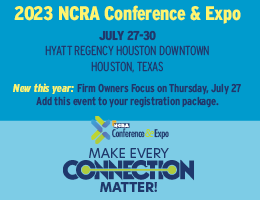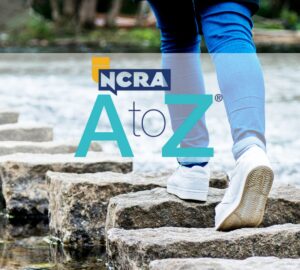According to Tim Piganelli, CEO Piganelli & Associates, Phoenix, Ariz., the most effective trial presentations — presentations where a reporter’s transcript and a videographer’s footage come together to create a polished final product — are those that effectively tap into the way jurors learn and retain information. Piganelli, who is recognized as one of the country’s top trial and discovery consultants in the areas of trial strategies, graphics and animation, trial presentation, courtroom technology, eDiscovery, and litigation support, shared his insights about the art of visual advocacy and creating trial presentations that are engaging, concise, and deliver a message, during a session held at NCRA’s TechCon 2014.
According to Piganelli, presenting evidence using technology that generates creative and engaging trial presentations has in part been driven by budget cuts in the courtroom that have resulted in limited time being allotted to some cases. “Trial presentations have decreased the amount of time a case can take from start to finish by 25 percent to 50 percent in some cases. They are a viable way to make the evidence presented in a way that jurors will stay engaged, learn, and retain information more effectively,” he said.
Piganelli told attendees that if they are planning to offer trial presentation services, it is imperative they understand that the general public and lawyers each learn differently, and that it is in the best interest of all parties to be sure litigators recognize that if they are not communicating appropriately to all jurors based on their demographics, then they are not getting to all of them.
Using a series of studies related to the way people learn based on age group and thinking processes, Piganelli pointed out that older jurors would be more likely to gather information by reading newspapers or watching television, for example, while younger generations are more apt to gather the same information through the Internet. Studies of the use of visual advocacy have indicated that using graphics in trial presentations can aid in helping jurors from all age groups to retain more information about the evidence in a case than by just listening to an attorney speak.
Other tips Piganelli offered to help create successful trail presentations included:
- Know that you will need to cull down the evidence presented in trial and understand that the bottom line is all about jury comprehension.
- Know that testimony, whether by video or text, is critical to all cases.
- An effective trial presentation paints a picture and tells a story and does so through charts, timelines, and graphics.












